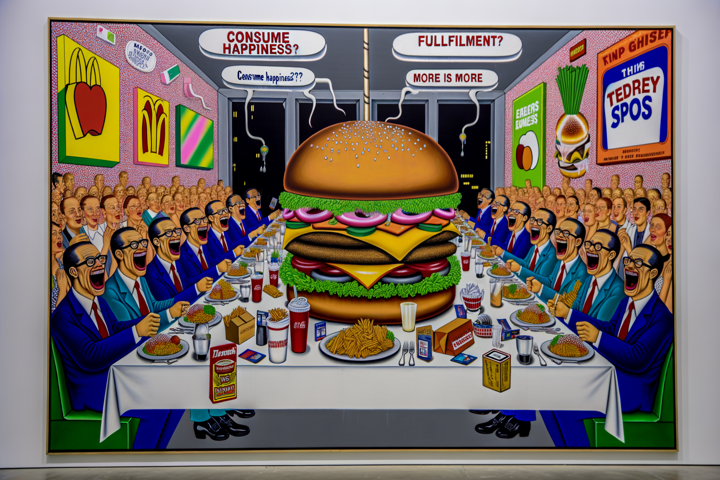
Modern Feast: Pop Art Dining with Consumer Culture Symbols & Parodic Ads
HD 1792x1024px, PNG
A vibrant, bustling dining room scene unfolds where traditional feast elements are replaced by exaggerated symbols of modern consumer culture. The table is adorned not with food but with oversized, brightly colored objects such as smartphones, credit cards, and fast-food wrappers, all painted in bold, saturated Pop Art colors.
At the center stands a large, shiny, perfectly symmetrical hamburger, towering over everything and mocking the idea of the "American Dream" meal with its exaggerated size and gloss. Around this centerpiece, figures dressed in corporate attire are seated, their faces cartoonishly exaggerated to express a range of emotions from elation to emptiness, underscoring the ironic emptiness of consumerism.
The walls display large, parodic advertisements instead of traditional artwork, each with catchy slogans like "Consume Happiness" and "More is More," written in the distinctive, punchy style of 1960s Pop Art text. These slogans critique the hollow promises of advertising culture.
Above this scene, a flickering neon sign questions the true value of material excess with the word "Fulfillment?" The overall composition is dynamic and chaotic, reflecting the frenetic pace and superficial allure of modern life. The painting critiques and mocks the irony of consumption and materialism, using Pop Art to emphasize the bright, superficial appeal contrasted with underlying emptiness.
